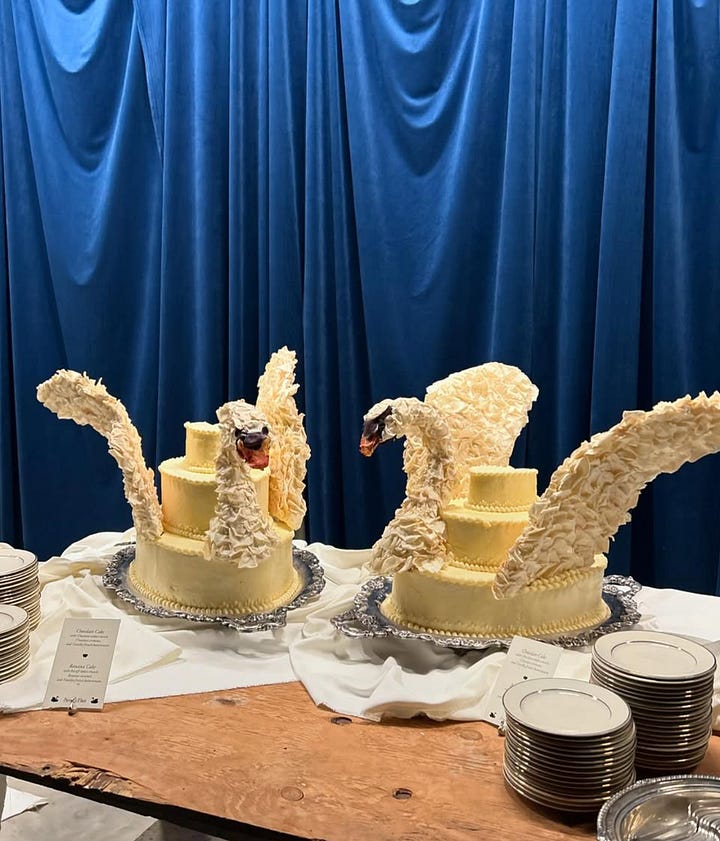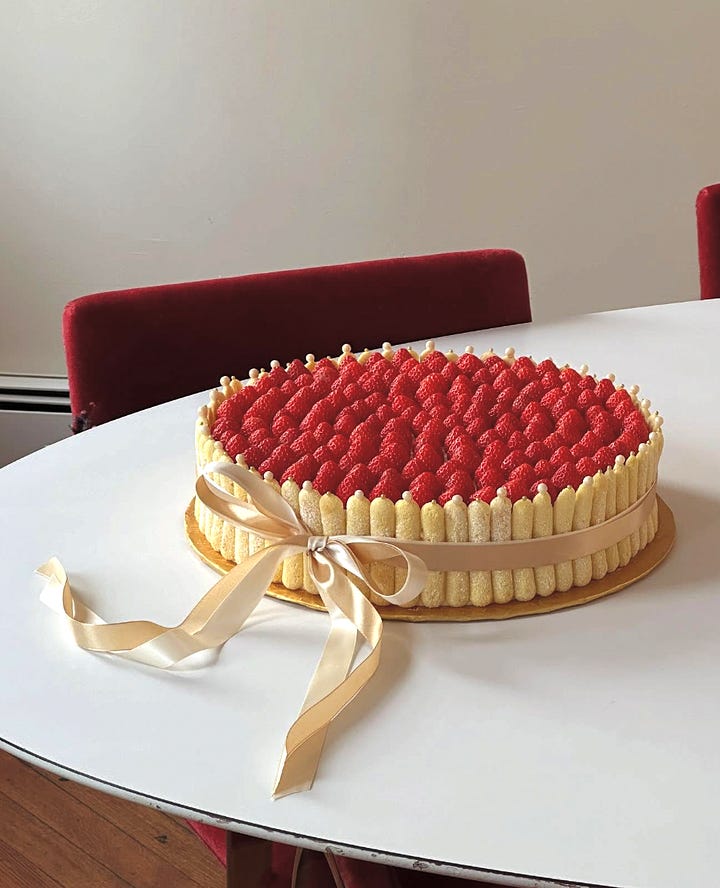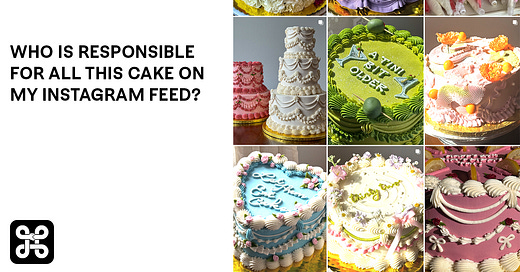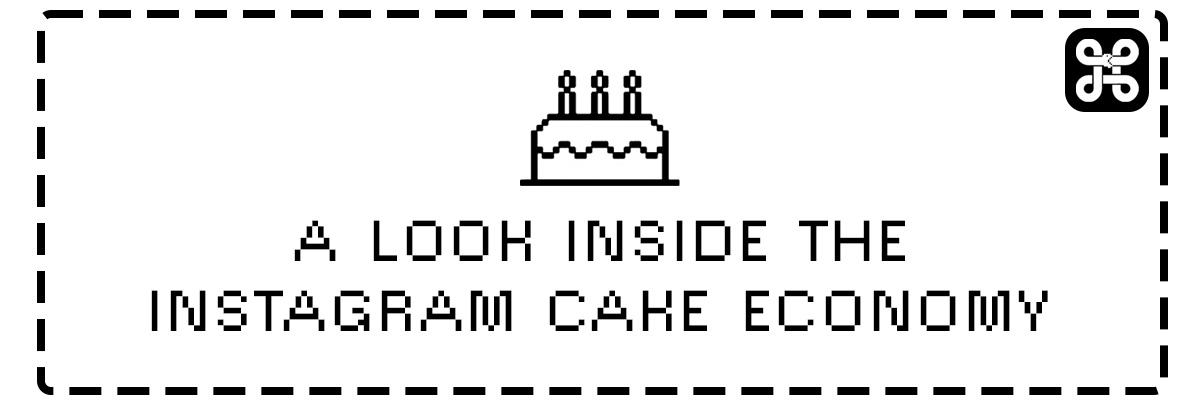Inside the Instagram cake economy. 🧈
Compression socks, hairnets, frosting, and 36-pound cases of butter.
Good morning everyone. Today’s newsletter features a series of interviews with people who bake cake for a living.
If you’re curious, my favorite slice of cake is at Bar Bete or any one of the hundreds of cakes
has made for me and our friends over the past seven years. I also really like the lemon chiffon cake at The Grill and the princess cake at Sant Ambroeus.Today’s letter also includes: the return of the Tory Burch flats,
’s Fox News appearance (and a quote from her about why the video is on Substack now), more bagels in Manhattan, Elon Musk’s new restaurant in Hollywood, and newsrooms are underpaying the writers keeping the lights on in their offices (people running affiliate stories).Over the holidays, I noticed that every morning when I’d open my phone to scroll through party photos, it appeared that Christmas trees and twinkling lights had been replaced with sugar. Cakes as centerpieces, cakes as the content, cakes as the main course. I have no idea if anyone was eating the cakes, but it appeared to be very important that there was a cake moment at the parties.
Cake has been percolating in all corners of my screens for years. It’s increasingly being used in marketing content for brands that have nothing to do with pastries. It’s being used on the covers of books written by influencers. This week, The New York Times’ Nikita Richardson wrote that, “nothing, and I mean nothing, is grander than a slab of layer cake.”
Cakes aren’t just for birthdays anymore. They’re for housewarming parties, breakups, anniversaries, brand events, product launches, game days, housewarmings, wedding showers, divorce parties, and 100,000 followers. And the bakers behind them are making serious money.
Many of the internet’s most-liked cakes aren’t coming from neighborhood bakeries anymore. Instead, Instagram has become a kind of bakery window, where ordering often happens via Google Forms or DMs, and storefronts are built entirely on social media. I spoke to some of the people who are behind the booming economy of cakes about the drive behind the growing demand of cake, how they approach pricing in a labor-intensive industry, and why there are so many “cake influencers” now.
Least glamorous part of the job?
“Dishes, early mornings, 12-15 hour work days, long periods of standing, cake disasters, working weekends, job becoming priority over social life.” - Aimee France
“My first thought would be dishes, but my second, more poignant thought would be the physical burden. Early morning hours, 8+ hours at a time of standing, hunching over a counter for most of the day, dry and cracked hands, hauling 50-pound bags of flour– baking is not for the weak! It has definitely made a stronger person literally and figuratively. And I wouldn’t have it any other way– I’m just working on ways to give my body as much care as I give my work.” - Morgan Knight (@saintstreetcakes)


“Literally anything and everything that isn't decorating the cake. The least though? I think the sheer amount of grocery runs you're doing- especially when you work from home. Loading and unloading 50-pound sacks of flour, and 36-pound cases of butter. Being in the grocery store? I'm already over stimulated from thinking about everything I have to get done while dodging other shoppers and now there's harsh fluorescent lights?” - Kassie Mendieta (@ibakemistakes)
“Cleaning. I despise the cake pan corners and KitchenAid crevices, the sticky frosting films and dusty clouds of powdered sugar and cocoa powder.” - Gaby Scelzo
“Wearing compression socks for projects where I need to be on my feet for 16+ hours, hairnets, and having my clothes covered in sticky sugar and butter.” -
“Trimming cakes, without a doubt. Most people assume you just bake, cool, and frost, but the reality is far more meticulous. Each cake rises differently depending on the oven, pan placement, leavening activation, and even the temperature of my ingredients. That means trimming is never the same twice. It takes serious precision and often feels like a full-blown engineering project to ensure every layer is perfectly level, even, and stackable. It's the behind-the-scenes work that makes the final product flawless.” - Allison Sheehan (@alliecatcakess)
How did your cake business start, and what was the moment you knew it had the potential to be a Real Business?
“I started on Instagram, posting photos of what I was baking during the pandemic. At the time, I was in college taking online classes, and simultaneously teaching myself how to mimic traditional baking techniques into vegan versions (I am no longer only vegan, though I do still offer vegan options). I never got to do an internship, so I treated this as kind of creating my own. I gained a following on Instagram and had a product that I thought was pretty good so I decided I would try to sell baked goods by doing pop-ups in the city. My first ever pop-up was at Hester Street Fair in 2020. Long lines would form and I would sell out, which I never expected to happen. I continued to do pop-ups and started to get commissioned orders due to word-of-mouth. I was still in college and was about to graduate, and I thought to myself, ‘I can start applying for communications jobs (that was my major) or I can try to start a business.’ I decided to take the risk and start a business and somehow everything worked out! I feel extremely lucky for the position that I am in.” - Aimee France
“In 2021, I was in my junior year of college, and still functionally in lockdown with my three best friends (Juliet, Sara, and Peri). For Juliet’s 21st birthday, we couldn’t do the classic bar crawl because of COVID, so we tried to make it as special as possible at home. I made her a lambeth-style cake decked out with macarons and pink and red frosting, and once we posted it on our Instagram stories, friends began to ask where we got it. I started an Instagram account (@saintstreetcakes), and started selling cakes to friends and classmates. I started posting them on TikTok, and a vegan cake with little frogs and mushrooms on it that I made for my friend Natasha went viral. Then I created a Google Form and started selling to people I didn’t already know that found me on social media. I have been baking forever, have always wanted to open a bakery, but always figured I’d do so after a long legal or political career. When I moved to New York after college, Saint Street kept growing while I worked full time as a paralegal for the US Attorney’s Office. I was rejecting so many orders per week because of my “real” job. Once I did the math, I realized that I could be making more money taking every order than I was at my legal job. I quit my job about 6 months later, and have been making cakes full-time since! (For the record, my friends had been rooting for me to quit law/politics and open a bakery from the very beginning).” - Morgan Knight


“I started back in 2020 after getting laid off from my pastry cook job. It was kind of the ‘thing’ pastry people were doing to make ends meet during uncertain times and I just hopped on that. I posted a menu to my Instagram stories, hoped for the best, and things blew up. I knew it could be a real thing when I was seeing the same faces year after year: making cakes for a wedding, then a year later for the baby shower, 18 months later a cake for a first birthday. I realized this isn't just a one-time purchase for people, or this novelty of supporting a random from home business… This is legit enough for them to come back again and again. I closed down for a bit in 2023 up until recently, and the reaction from my customer base also told me it was real – ‘What am I going to do without you and your cakes?’ and now that I'm making my comeback ‘I've been so lost without your cakes!’" - Kassie Mendieta





